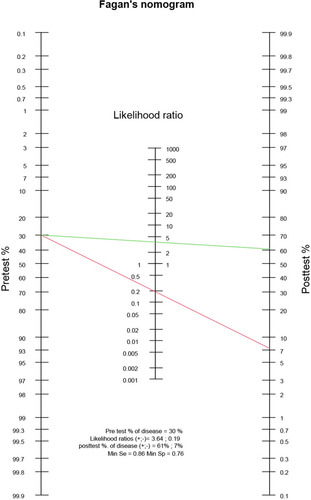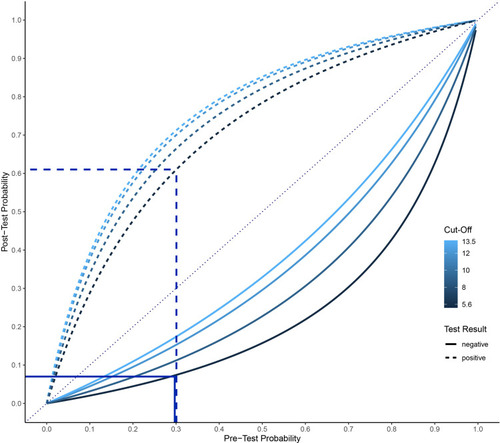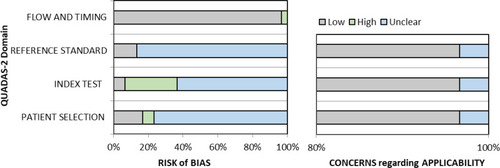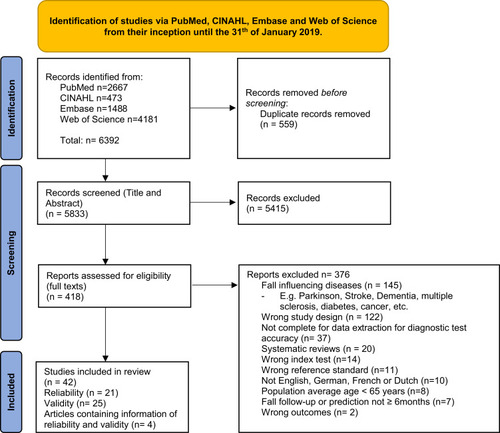Figures & data
Table 1 Validity; Area Under the Curve (AUC) for the Different Settings, Summary of Findings
Table 2 Inter- Rater and Intra-Rater Reliability for Community-Dwelling Setting, Summary of Findings
Table 3 Validity for Community-Dwelling Setting, Summary of Findings
Table 4 Inter-Rater and Intra-Rater Reliability for Nursing-Home Setting, Summary of Findings
Table 5 Validity for Nursing Home Setting, Summary of Findings
Table 6 Inter-Rater and Intra-Rater Reliability for Hospital Setting, Summary of Findings
Table 7 Validity for Hospital Setting, Summary of Findings
Table 8 Inter-Rater and Intra-Rater Reliability for Combined Setting of Hospitalized and Community-Dwelling Persons, Summary of Findings
Table 9 Validity for Combined Setting of Hospitalized and Community-Dwelling Persons, Summary of Findings




